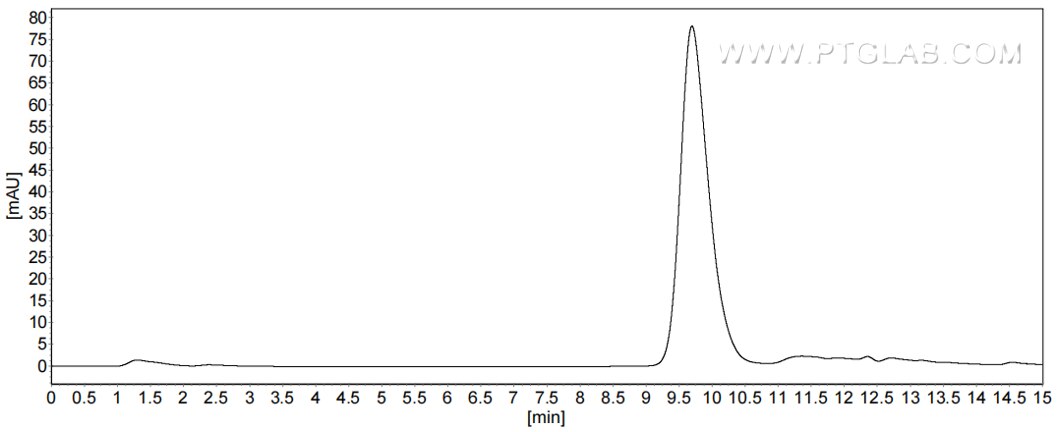Recombinant Rat Lipocalin-2/NGAL protein (His Tag) (HPLC verified)
Species
Rat
Purity
>90 %, SDS-PAGE
>90 %, SEC-HPLC
Tag
His Tag
Activity
not tested
Cat no : Eg1022
Validation Data Gallery
Product Information
| Purity | >90 %, SDS-PAGE >90 %, SEC-HPLC |
| Endotoxin | <0.1 EU/μg protein, LAL method |
| Activity |
Not tested |
| Expression | HEK293-derived Rat Lipocalin-2 protein Gln21-Asn198 (Accession# P30152) with a His tag at the C-terminus. |
| GeneID | 170496 |
| Accession | P30152 |
| PredictedSize | 21.6 kDa |
| SDS-PAGE | 22-26 kDa, reducing (R) conditions |
| Formulation | Lyophilized from 0.22 μm filtered solution in PBS, pH 7.4. Normally 5% trehalose and 5% mannitol are added as protectants before lyophilization. |
| Reconstitution | Briefly centrifuge the tube before opening. Reconstitute at 0.1-0.5 mg/mL in sterile water. |
| Storage Conditions |
It is recommended that the protein be aliquoted for optimal storage. Avoid repeated freeze-thaw cycles.
|
| Shipping | The product is shipped at ambient temperature. Upon receipt, store it immediately at the recommended temperature. |
Background
Neutrophil gelatinase-associated lipocalin (NGAL, also known as lipocalin-2, siderocalin, or LCN2) is a small molecule of almost 25 kDa that belongs to the well-defined superfamily of proteins called lipocalins. NGAL was initially found in activated neutrophils, under its role as an innate antibacterial factor. However, it subsequently was shown that many other types of cells, including in the kidney tubule, may produce NGAL in response to various injuries. NGAL may become one of the most promising next-generation biomarkers in clinical nephrology and beyond.
References:
1. Lim D, et al. (2021) CNS Neurosci Ther.27:883-94. 2. Kjeldsen L, et al. (1993) J Biol Chem.268:10425-32. 3. Devireddy LR, et al. (2005) Cell.123:1293-305. 4. Xing C, et al. (2014) Stroke.45:2085-92. 5. Asaf S, et al. (2023) Immunol Res.71:287-313.

